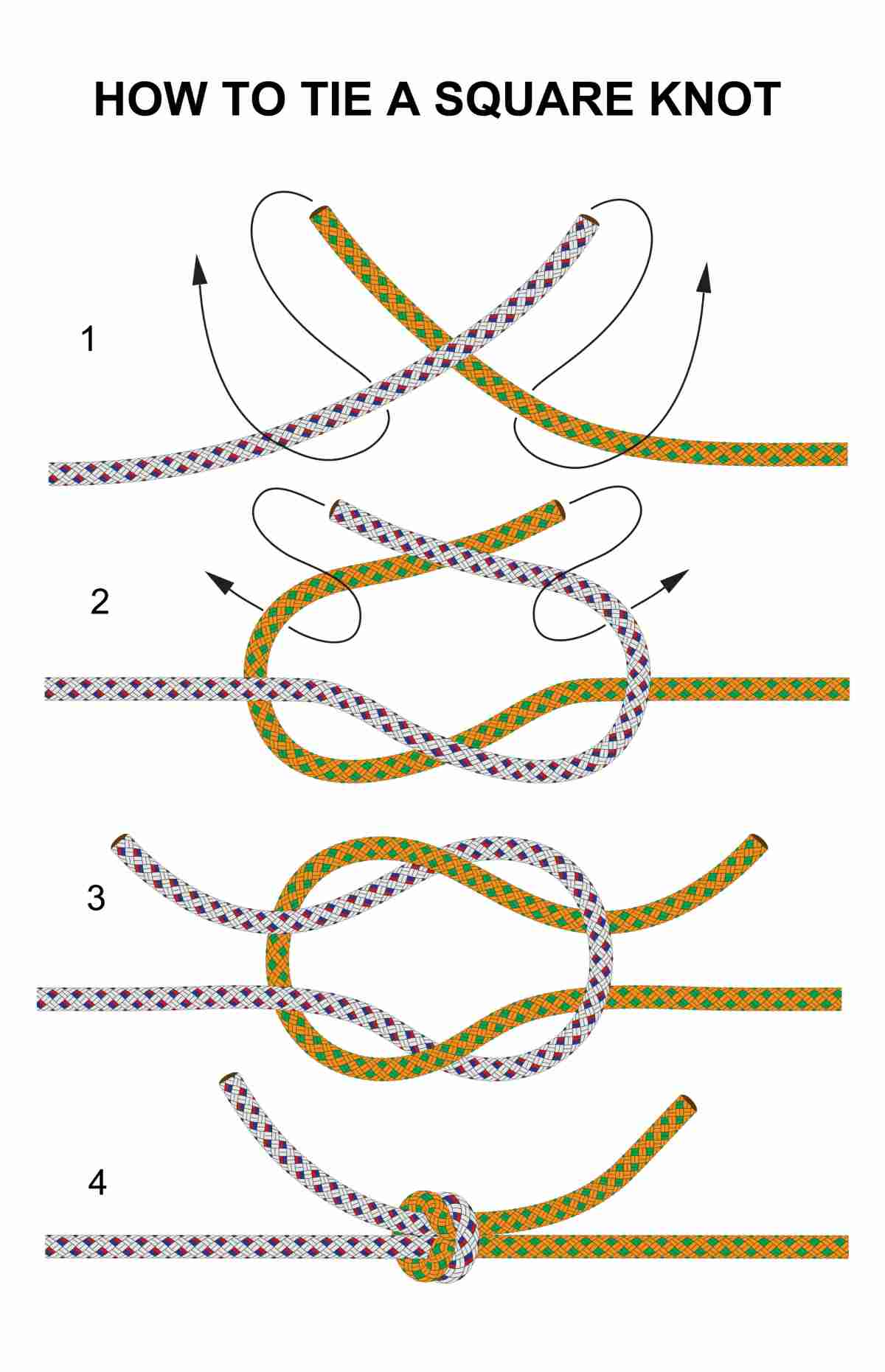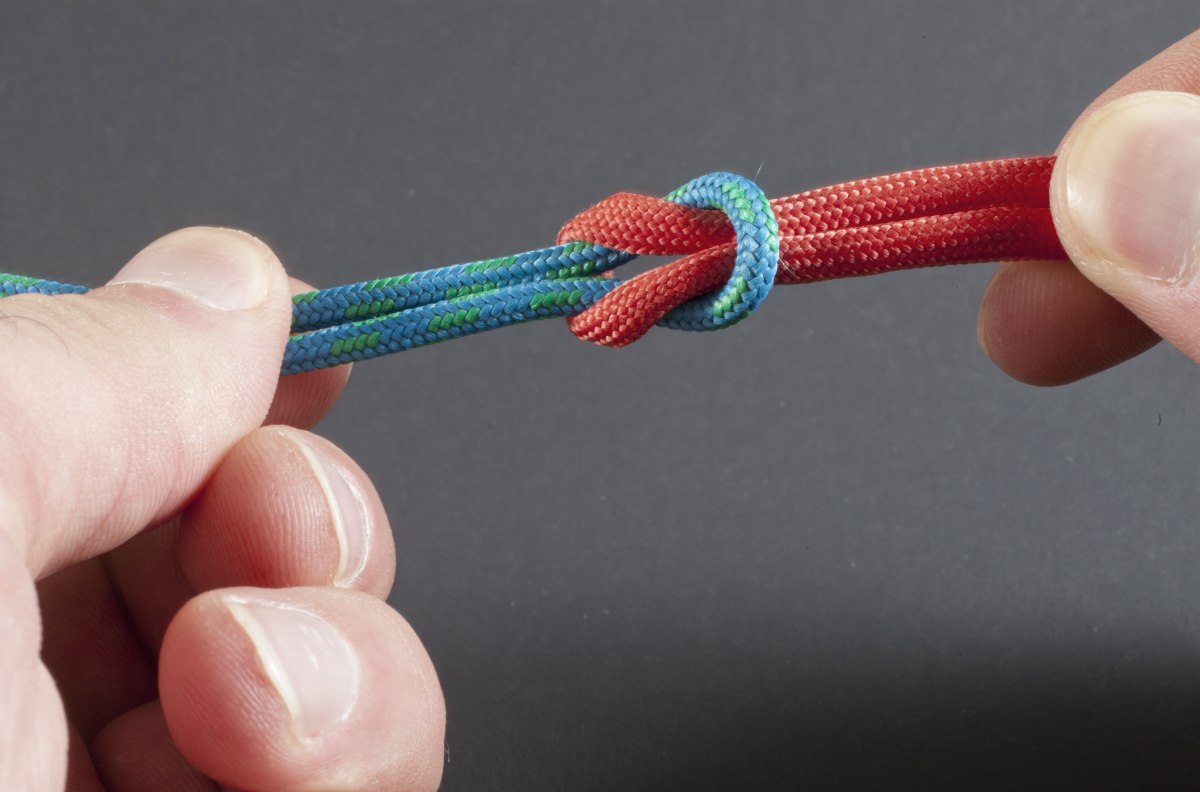The following article How To Tie A Square Knot | Step-By-Step Instructions is republished from Total Survival
Often called the reef knot, the square knot is one of the most commonly used knots. Following the instructions here on how to tie such a knot can be a lifesaver.
RELATED: Tie It All Together With These 9 Survival Knots
In this article:
How to Tie a Square Knot to Add to Your Survival Skills
The Square Knot
The square knot is probably the best-known knot or at least one of them. It is also sometimes referred to as the reef knot used primarily to join two ropes, cords, or lines of similar thickness.
Square knots are easy to tie and the perfect knot choice for many things, but there are also times when you should not use them. We encourage you to learn as much about basic knots as you can, so you can use the right types of knots for the right situations.
Uses for Square Knots
- First aid, to tie bandages
- A common knot used in surgery
- To tie boot or shoelaces
- To tie belts and sashes
- Tying the reefing points of sail when the wind blows up
- To tie plastic bags and trash bags
When Not to Use a Square Knot
Square knots are not your best choice when you have two different thicknesses you wish to join. They slip when you tie them with a nylon rope and will also slip if it is not under tension.
CRITICAL TIP:
Square knots can be dangerous if misused and should never be used in critical situations where lives might be at risk. This is simply due to the potential instability of the knot.
Unfortunately, many accidents took place as a result of trying to join two ropes with a square knot.
RELATED: Best Knots For Camping And Survival
Step-by-Step Instructions

Pay close attention to these steps, as a square knot is often tied wrong. You will end up with a “granny knot,” which may slip under a heavy load.
See how this type of knot looks like or tied by using two colors of cord.
1. Remember: “Right over left, left over right.”
2. Take one line in your right hand, and one in your left and lay the right over the left.
3. Pass the right end over the left end and back under the left.
4. Pass the left end over the right end and back under the right.
5. Check the knot (the two loops should slide on each other)
6. Tighten by pulling both strands on each side of the knot.
7. Backup the square knot by making an overhand knot using the working end of each side of your knot.
8. Backing up a knot is important with a knot like the square knot, otherwise, it can slip.
This video from Art of Manliness will show you how to tie a square knot:
Now you know one more type of knot to add to the knots and hitches tricks you can pull off your sleeves for camping and survival. Remember, while this is a simple and reliable knot, it has its limits, so use it the right way for your own safety.
How would you use this type of knot? Let us know your thoughts about it in the comments section below!
Up Next:
- 40 Essential Knots Every Survivalist Needs To Know In The Outdoors
- 36 Awesome Paracord Projects For Preppers
- Adding a Zippo Lighter to Your Prepping Supplies
Make sure your survival gear is fully stocked with the latest and check out the Survival Life Store!
Follow us on Facebook, Instagram, Twitter, Pinterest, and Tumblr!
***Disclaimer: The contents of this article are for informational purposes only. Please read our full disclaimer.***
Editor’s Note: This post was originally published on February 20, 2014, and has been updated for quality and relevancy.
This Article Was First Found at survivallife.com Read The Original Article HereArticle Source Here: How To Tie A Square Knot | Step-By-Step Instructions


No comments:
Post a Comment